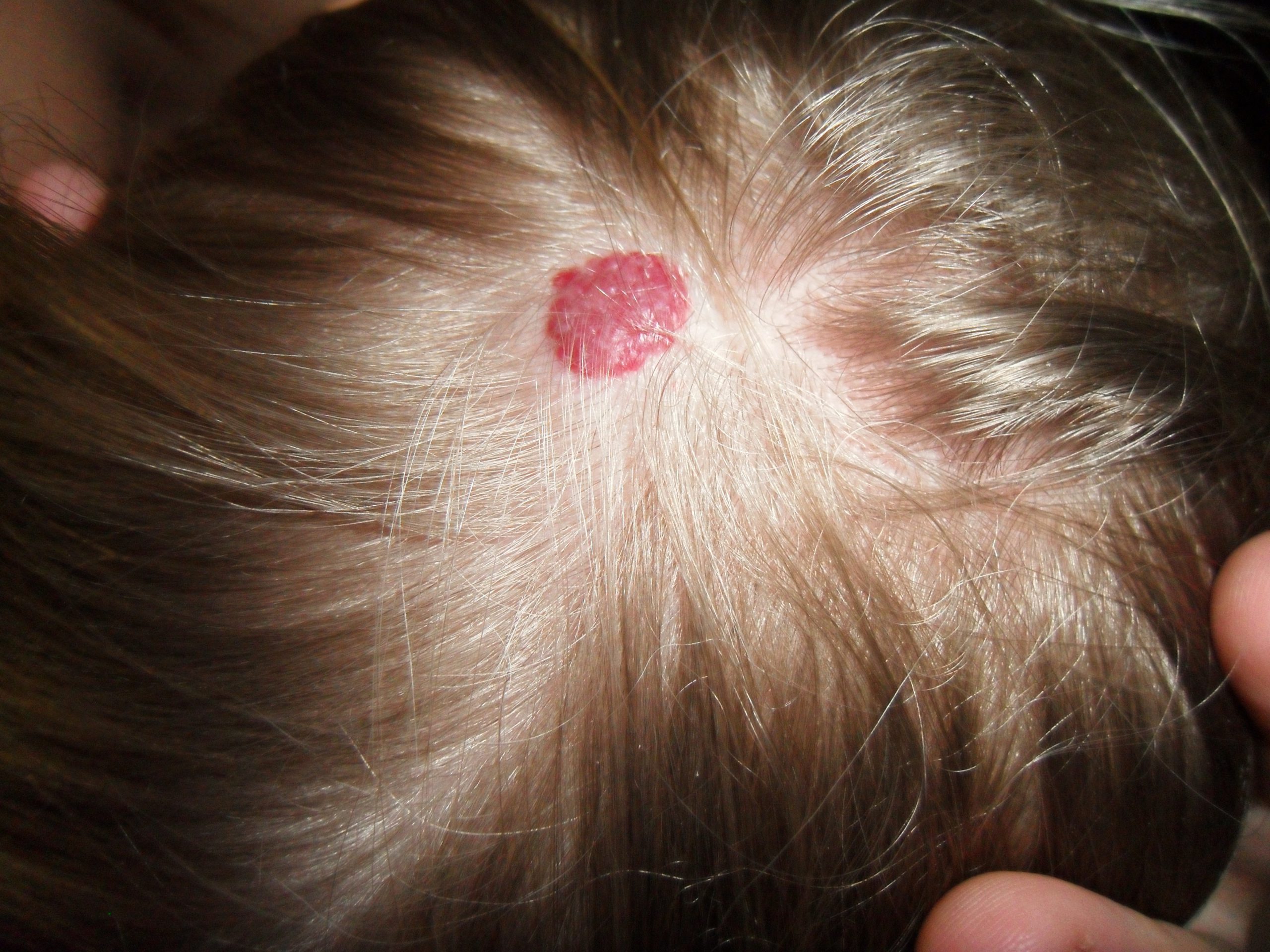Written by Dr. Ringpfeil

Hemangiomas are noncancerous tumors that occur due to an excessive growth of blood vessels. They are classified based on their location within the skin, namely superficial, mixed, and deep hemangiomas. Hemangiomas are uncommon at birth, with only about 1% to 3% of individuals affected. They typically develop rapidly, starting around 1 to 2 months of age, and continue growing until 6 to 9 months. After this phase of rapid growth, hemangiomas will spontaneously regress. Around 50% of hemangiomas resolve by the age of 5, and about 90% resolve by the age of 9.
The diagnosis of hemangiomas is primarily based on their characteristic appearance as vascular lesions. Superficial hemangiomas, often referred to as strawberry hemangiomas, appear bright red, while deep hemangiomas have a bluish color.
The majority of hemangiomas do not require treatment and can be monitored by measuring and photographing them. It is important to observe for any signs of erosion. However, hemangiomas located in areas that interfere with vision, feeding, or breathing may need treatment.
Most hemangiomas do not necessitate treatment since they are benign and tend to resolve on their own. However, in cases where treatment is necessary due to the critical location of the lesion, options include surgery (although it is not commonly preferred due to resulting cosmetic defects), corticosteroid injections, oral steroids, laser treatment, oral propranolol, or interferon.
Hemangiomas are generally painless, so specific coping strategies are not required for the affected young patient. However, parents often need reassurance and education about the benign and self-resolving nature of the lesions. It is important for parents to understand that there will be a period of rapid growth and that it may take years for the hemangioma to completely resolve. They should also be aware that unnecessary aggressive treatment can carry risks of side effects and may lead to permanent cosmetic defects.
Patients ask Dr. Ringpfeil answers
Please feel free to use this form to ask our dermatologists questions about this treatment.